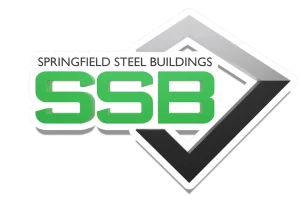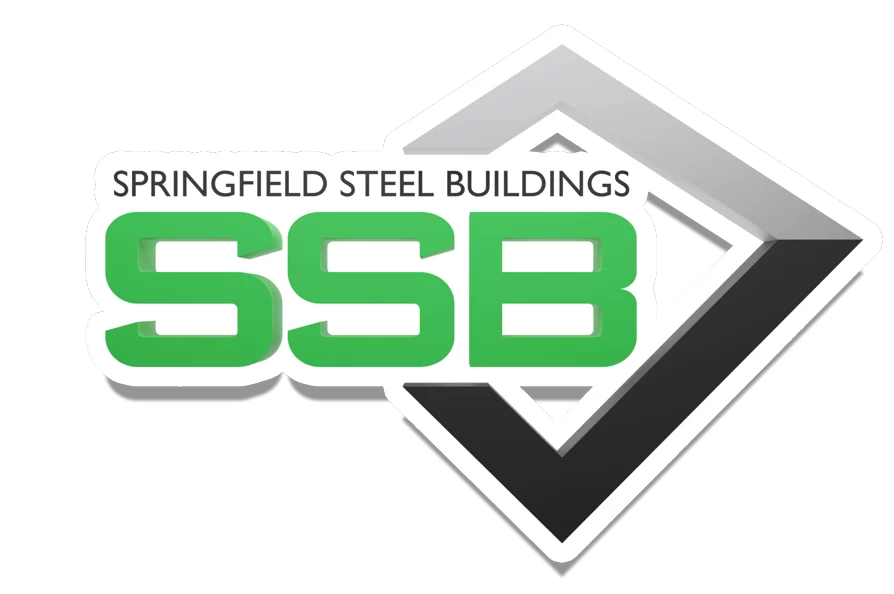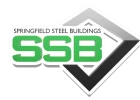What Are the Pros and Cons of Steel Frames Buildings?
Steel-framed buildings are a popular choice for many construction projects. They provide strength and durability, as well as flexibility. But there are some disadvantages to these types of building structures that you should be aware of before making your decision. In this article, we will take a look at the pros and cons of steel-framed buildings so that you can make an informed decision about what type of building structure is best for your needs.
What Are Steel-Framed Buildings?
Steel-framed buildings are structures that are made predominantly of steel beams and columns. The frame is the load-bearing part of the building, while the walls and roof can be made with other materials such as concrete, glass, or plastic. Most commonly, steel frames are cladded with single skin, or composite cladding like Kingspan KS1000RW cladding. The popularity of steel-framed buildings has increased in recent years due to several factors, including:
- The increasing demand for sustainable construction methods.
- The need for faster construction times.
- The trend towards more open-plan office spaces.
The most common type of steel frame is the I-Beam Structure. There are different steel frames, with the most common being the I-beam.
This type of frame is created by three metal beams placed perpendicular to each other, forming an “I” shape. The I-beam is the most robust and durable type of steel frame and can be used in residential and commercial construction.
Steel frames are also available in various shapes, including square, rectangular, and circular. This allows for greater flexibility in design and can be used to create unique and eye-catching buildings.
Steel Frame Construction
Steel frame construction is a popular method in the building industry, known for its strength, durability, and versatility. This construction technique involves creating a skeletal frame of vertical steel columns and rafters, which can support floors, roofs, and walls. There are various types of steel frame construction, including light gauge, bolted, and fabricated steel frames, each offering unique advantages for different applications.
Advantages of Steel Framed Buildings
There are several advantages to using a steel frame for your next construction project:
- Strength and Durability – Steel is one of the most robust materials available, meaning that your building will be able to withstand wind loads and other natural disasters.
- Long-lasting – steel is a material that can last for years and will not need to be replaced, unlike traditional buildings, which may require repairs or renovations after several decades of use.
- Eco-friendly – Metal frame buildings have the lowest carbon footprint. It uses less energy than wood and concrete structures due to its lighter weight, meaning that it requires less fuel during transportation and less heating/cooling in warmer climates.
- Moisture & Weather Resistance – Structural steel can be made even more resistant to water with the help of zinc-based coatings and powder treatments. Since structural components are subject to constant exposure, they need all the protection they possibly can get!
- Construction Speed – One advantage of using an all-steel structure is that you can construct your new office space much faster than if you were using another form of construction such as timber or cement block. This means savings on labour costs.
- Pest-free – The use of structural steel in buildings can provide a long-lasting and pest-free environment for all those who enter your building. With its resistance to burrowing insects, you won’t have the problem associated with wooden frames if this material is selected.
There Are a Few Disadvantages to Using Steel-framed Buildings
- Weight – Steel is a heavier material than other construction materials, meaning that your building will require more foundation support.
- Cost – Although the upfront cost of steel frame construction may be higher than traditional methods, it is often cheaper in the long run as there is less need for repairs and maintenance.
- Noise – The use of metal in the construction process can lead to increased noise levels, which may be a problem for those working or living close to the building.
- Fire Resistance – Steel-framed buildings are not as fire-resistant as traditional concrete structures. If you live in an area prone to wildfires, it may be essential to consider this before choosing a steel frame for your home.
- Reduced Flexibility – Wooden structural components like beams and posts can be cut down to size, nailed in place, or adjusted on site. While this is impossible with steel because of its sturdy nature, it also means that mistakes made during manufacturing may result In an inaccurate product that could hold up construction work.
What is the Problem With Steel Framed Homes?
Steel framed homes can have significant insulation and energy efficiency issues. This is mainly because steel conducts heat 300 to 400 times more effectively than wood, significantly diminishing the effectiveness of wall insulation. The concept of thermal bridging, where heat dissipates along the most conductive path (in this case, steel), results in a reduction of the insulating properties of wall insulation by up to 60%. This makes steel an excellent conductor of heat, which is a disadvantage in maintaining energy efficiency in homes.
What is the Cost of a Steel-Framed House?
Steel frames are more expensive than timber, but there’s a compelling reason for that. While off-site preparation and installation take longer with steel, on-site labour can be reduced by as much as 60%. This means you might end up paying about even in totalities for materials like wood or brick if not taking these factors into account!
Three Factors That Affect Steels Lifespan
- Quality – Steel is a durable material that can withstand the elements. If you want your steel structure to last as long and stand up against everything else, make sure it has high-quality products from trusted suppliers with experience in providing these types of services for all sorts of weather conditions.
- Use – The durability of a material can often be determined by its use. For example, steel that gets more frequent service and endures greater strain will have a shorter lifespan than other types with less demanding jobs on their hands!
- Proper Care – Steel is a durable metal, but it’s not resistant to corrosion. You can help protect your steel from the elements with adequate priming and cleaning techniques. A good way of caring for our precious resources is by properly taking care when handling them and being mindful about how we use them, so they last longer in any environment or situation!
Environmental Sustainability
At Springfield Steel Buildings, we’re committed to sustainability through environmentally conscious building practices. Steel frames significantly reduce environmental impact due to their 100% recyclability. This characteristic means that steel can be continuously repurposed, minimising waste generation during construction phases and reducing overall landfill contributions.
Furthermore, steel structures typically require fewer raw materials than traditional construction methods, significantly decreasing the ecological footprint of your building project.
Steel buildings also facilitate enhanced energy efficiency. Thanks to precise engineering and construction methods, steel structures from Springfield Steel Buildings easily integrate energy-saving components such as improved insulation, ventilation systems, and reflective roofing solutions. These enhancements reduce energy consumption and lower operating costs and contribute positively to long-term sustainability efforts.
Key Sustainability Benefits:
- Completely recyclable and reusable steel materials.
- Reduced waste generation during construction.
- Supports energy-efficient design and reduced carbon footprint.
- Minimises ecological disruption compared to conventional methods.
Maintenance and Longevity
Springfield Steel Buildings provide unmatched durability with minimal long-term maintenance requirements. Unlike traditional wood or concrete structures, steel is inherently resistant to threats such as termites, mould, mildew, and wood rot, effectively reducing the ongoing maintenance burden and associated costs. Steel’s durability ensures your building remains structurally sound and visually appealing for many decades, even under harsh environmental conditions.
Regular maintenance for steel structures is straightforward, involving simple inspections and minor preventative measures. Protective coatings and rust-resistant treatments are easily applied, safeguarding your steel building against corrosion, especially in environments with higher humidity or coastal exposure.
Maintenance Tips for Longevity:
- Conduct routine inspections for signs of corrosion or damage.
- Apply protective treatments and coatings as preventative measures.
- Promptly address minor damage or scratches to prevent corrosion.
- Keep gutters and drainage systems clear to avoid moisture buildup.
Design Flexibility and Versatility
Springfield Steel Buildings offer exceptional versatility, allowing customised solutions tailored precisely to your unique requirements. Steel frames easily accommodate open floor plans and wide-span designs, ideal for industrial, agricultural, commercial, or recreational buildings. With fewer load-bearing walls required, you have greater freedom to design flexible internal spaces that can adapt as your business or personal needs evolve.
Steel construction also facilitates future modifications and expansions with ease. Whether your business grows, requiring additional storage or workspace, or you decide to repurpose your building for different uses, steel framing simplifies the transition, significantly reducing renovation costs and project timelines.
Versatility Advantages of Steel Framing:
- Open-span construction for spacious interiors.
- Easy adaptability for future expansions or layout changes.
- Accommodates innovative, custom designs effortlessly.
- It is ideal for diverse building purposes, from commercial to recreational.
What Are Metal Frame Buildings Used For?
Metal frame buildings are used across a wide range of UK industries thanks to their strength, flexibility, and efficiency. At Springfield Steel Buildings, our steel-framed structures are ideal for agricultural storage units, industrial workshops, commercial premises, retail units, and more.
The adaptable design of steel frames makes them suitable for everything from small-scale utility buildings to large open-span warehouses. Whether you’re looking for a durable building for manufacturing or a cost-effective solution for farming operations, metal frame buildings offer a reliable and long-lasting choice.
Are Steel Frame Houses a Good Investment?
Steel frame houses are becoming an increasingly popular option in the UK, especially in areas where long-term structural reliability and sustainability are priorities. These homes offer a solid return on investment due to their low maintenance needs, fast construction timelines, and long lifespan.
Springfield Steel Buildings provides robust steel frame systems that are engineered for performance, making them a smart choice for modern housing developments. While initial costs may be higher than traditional timber construction, the long-term benefits of durability and energy efficiency can make a steel frame house more cost-effective over time.
What Is the Frame of Steel in Construction?
The “frame of steel” refers to the structural skeleton of a building composed of beams, columns, and other load-bearing elements made from steel. This frame supports the entire weight of the structure, including walls, floors, and the roof. At Springfield Steel Buildings, we use precision-engineered steel frames that meet all UK building regulations.
Our frames are designed to deliver exceptional strength, ensuring long-term structural integrity in both industrial and commercial settings. The use of a steel frame offers a reliable solution for projects that demand resilience and design flexibility.
Understanding Steel Frame Construction Techniques
Steel frame construction in the UK typically falls into three main categories: light gauge, bolted, and fabricated.
- Light gauge steel is ideal for smaller structures or internal partitions, offering a fast and efficient build.
- Bolted steel frames are assembled using pre-drilled connections, making them highly suitable for industrial buildings and warehouses.
- Fabricated steel frames are custom-made for complex projects, offering greater flexibility in shape and size.
At Springfield Steel Buildings, we assess the needs of every client to determine the most appropriate steel frame construction method for the project. Our experienced team ensures that all buildings are manufactured to exacting standards, whether you require a simple open-span structure or a bespoke design.
Steel Skeleton Frame Construction Explained
Steel skeleton frame construction is a method where a network of vertical columns and horizontal beams forms the structural framework of a building. This technique allows for large, open interior spaces without the need for load-bearing internal walls.
In the UK, this system is widely used for factories, retail units, and office buildings. Springfield Steel Buildings specialises in skeleton frame solutions that support a wide range of uses, providing the strength and adaptability needed for long-term performance.
What Are Steel Frame Systems?
Steel frame systems are pre-designed structural solutions that use a coordinated set of steel components to create a complete building framework. These systems offer a faster and more cost-efficient way to construct buildings while maintaining high standards of safety and durability.
At Springfield Steel Buildings, our steel frame systems are fully tailored to your requirements and manufactured to strict UK standards. Whether you need a compact storage unit or a large-scale industrial building, our frame systems deliver dependable performance and seamless installation.
Do Steel Door Frames Offer Better Security?
Steel door frames offer a significantly higher level of security compared to traditional timber or plastic alternatives. They are resistant to warping, splintering, and break-ins, making them an ideal choice for commercial and industrial buildings across the UK.
Springfield Steel Buildings can supply and fit steel door frames as part of your full building solution, ensuring that access points are as secure and durable as the structure. Steel door frames are a smart upgrade for clients who prioritise safety and long-term reliability.
In Conclusion
Steel has been around for centuries and is still one of the most popular construction materials. Steel framed buildings are known for their strength and durability. They can withstand high winds and earthquakes, making them a popular choice for areas prone to natural disasters.
However, steel-framed buildings do have some drawbacks. They are more expensive to build than traditional wood-frame buildings. And they require specialised knowledge and equipment to construct, making them difficult to assemble in remote locations.
Despite these drawbacks, steel-framed buildings continue to be a popular choice for construction projects worldwide. Their strength and durability make them an excellent option for many different applications, and their flexibility allows them to be adapted to a variety of different settings and conditions.
If you consider building a steel-framed building, it is essential to understand the pros and cons of this type of construction. By understanding the benefits and drawbacks of steel framing, you can make an informed decision about whether this type of construction is right for your project.
Here at Springfield Steel Buildings, we are experts in everything related to steel buildings in the Commercial and Industrial sectors.


